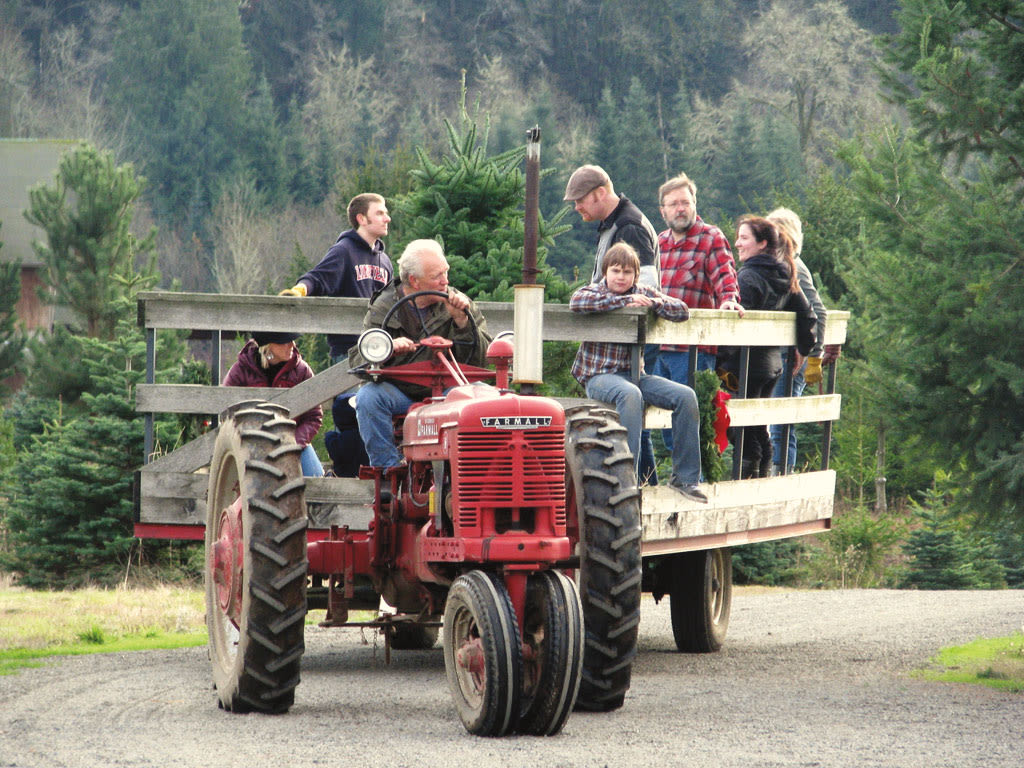Oh Tannenbaum? Are You Out There, Somewhere?

The historic Kirchem Farm did not open for u-cut this year, thanks in part to last summer's heat wave, which took a number on their signature crop.
Image: Historic Kirchem Farm
If you think that it was harder than usual this year to track down the perfect evergreen for your living room, you’re not wrong: There are fewer Christmas trees this year, and some are looking a little smaller than normal. And not to be the Grinch about it, but most of them are costing a few more bucks than usual.
Industry experts from the National Christmas Tree Association have estimated a 10 percent loss in the year’s Christmas tree harvest and a 5 to 10 percent increase in prices in the Pacific Northwest.
So what’s got Christmas tree farmers feeling so blue at a time of year when they are usually in the green?
This year has been a perfect storm of problems for Oregon’s Christmas tree industry. Usual suspects like omnipresent supply chain difficulties and labor shortages are part of the puzzle, but the biggest culprit is this summer’s record-breaking heatwave.
Seedlings were the most vulnerable, many shriveling and dying, while more mature firs suffered sunburn during June’s brutal heat wave. Farms on the south side of Mount Hood were hit particularly hard, while others on the north side of the mountain faired better. Some farms like Kirchem Farm and Reichen Christmas Tree Farm were unable to open at all this year.
“With the record harvest of last year and the summer heat that killed many of our established tress, and nearly all of our saplings, we need a year for growth and tree recovery,” the owners of Kirchem Farm wrote in a Facebook post. “Our family will deeply miss seeing you all this year.”
While these losses have impacted Oregon’s supply of Christmas trees, it will impact other states and countries even more so.
Oregon is one of the largest Christmas tree producers in the United States, harvesting 3.5 million trees at over 300 farms across the state, many of them family owned. Most of these trees are exported to places like California, Mexico, and as far as Asia. Increased fuel and shipping costs mean that it’s been trickier to ship the trees to these places, raising prices nationwide.
Local grocery stores that sell Christmas trees are also affected.
“Trees are bid on in the springtime, similar to the way a CSA works. You pick your lots, and you hope for the best,” says Jess Wilke, a floral manager at New Seasons Market. “We definitely got shorted this year. The trees are really tiny.”
Usually the grocery store offers organic, locally grown trees at all their locations across the Portland Metro area, but this time around only five New Seasons locations will be offering Christmas trees. A shortage of trees also means a shortage of greens, meaning there will be fewer wreaths and boughs as well.
Stil, there are still trees to be found in Oregon, despite the shortage. Just prepare for sticker shock, prices are high, continuing a five-year trend of steadily increasing costs.
Your best bet? Grab a tree, wreath, or other evergreen decoration sooner rather than later.




